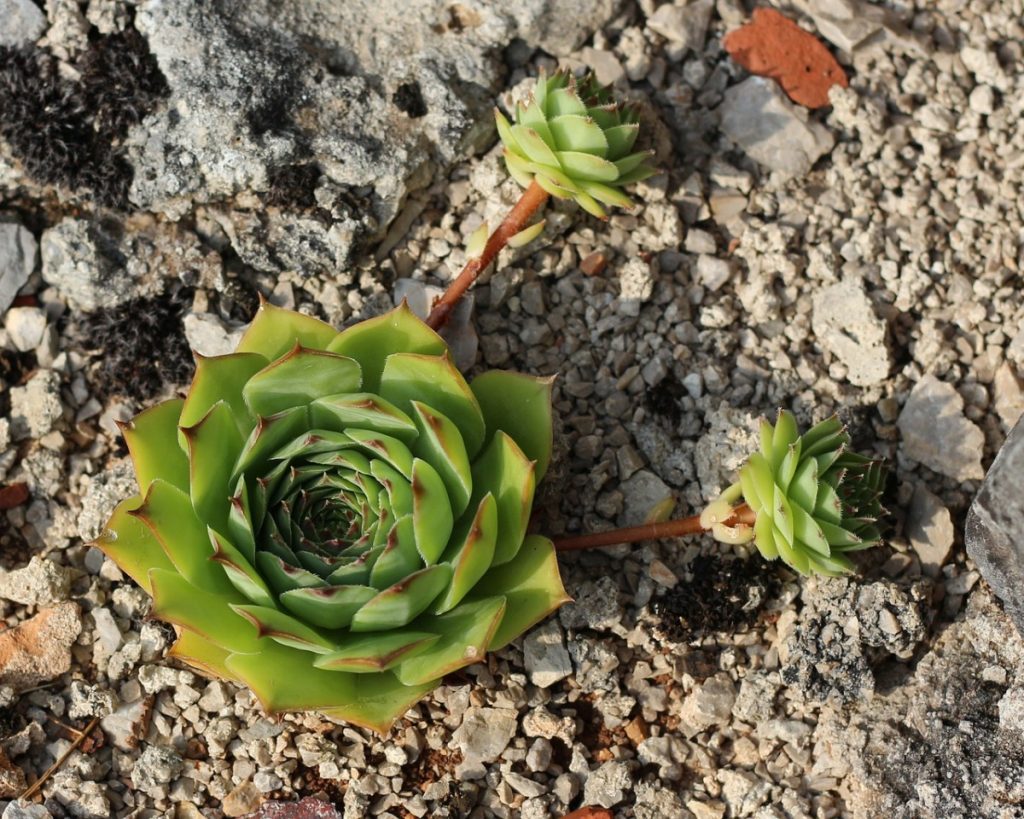There’s been a lot of discussion about various materials for succulents, be it for growing or propagating the plants. LECA balls, peat moss, Spanish moss, paver sand, to name just the few. In this article though we will focus on Vermiculite, a mineral which is used in exfoliated form in seed germination, plant propagation from cuttings, and as a part of soil-less growth medium for plants.
Most succulent growers wonder whether they can replace pumice or perlite in their succulent soil mix with vermiculite. Hence we will focus mostly on this topic. We will compare all three minerals, and at the end you should know whether or not using vermiculite is a good idea. But we will also border other topics (such as using vermiculite in succulent propagation), just to make sure we have all angles covered. If something is unclear to you at the end of this article, you can always contact us for more information.
Vermiculite holds water longer than pumice or perlite
One of the basic rules with succulents is that you do not want the soil mix to hold too much moisture. Such conditions cause root rot, and show me at least one succulent grower who has never lost a single succulent as a result of root rot :). Vermiculite holds water longer than the other common materials you’d use in your own soil mix for succulents, which can cause a problem, especially if it forms a significant portion of the soil mix, or if you grow in such a soil mix one of the succulents especially prone to root rot or other related problems.
Having said that, in certain situations this can actually be a benefit, for example when you try to grow succulents from cutting. In this case, you want some moisture in the soil, because when the new roots are forming, they need more water than a mature succulent does. Hence it makes a lot of sense using Vermiculite in such occasions.
Vermiculite will prolong the usability of the soil mix
In permaculture (I am still learning about it and how it applies to succulents), you will rarely if ever change the soil in the pot of your plants. In traditional gardening, however, you will change the soil once every year or two, and with succulents maybe once in every three of four years (since they are less demanding than other plants). This is done because the different materials you use in the soil slowly degrade, changing in structure and properties, especially the peat, and the soil will often become too compact for succulents as a result.
Adding Vermiculite to the soil mix no doubt extends the usability of the soil mix, which is a big plus from both ecological and economical point of view. Good soil is sparse after all, and it isn’t cheap either. The less often you have to change it, the better for both our planet and your wallet :). Having said that, adding perlite or pumice will produce the same results, so this alone isn’t a reason for substituting them with Vermiculite.

Can you plant succulents in straight Vermiculite?
A quick answer is NO. Succulents aren’t demanding plants, but they still need some nutrients, and won’t be able to get them from inorganic matter only, such as Vermiculite. You may sometimes see succulents planted in straight Vermiculite, but this only for decoration purposes and short term arrangements (such as on fairs or expositions). Succulents can survive in Vermiculite only for a few months, but they won’t thrive, and will eventually die.
Having said that, you have a workaround here. If you fertilize the plants with a diluted liquid fertilizer once a week, the succulents will survive in Vermiculite even for longer time periods. But I would not suggest this option, since it isn’t really ecological. It is much better planting the succulents in some good soil mix, and letting them grow without a need to fertilize them regularly.
Vermiculite is succulent propagation
Experienced growers can buy one healthy succulents and grow hundreds of other succulents from it, in a matter of a single year. We can propagate succulents from leaves, stems, seeds. And then we can sell them making a bank :). Having said that, the process isn’t always smooth and straightforward, and you may sometime have to use rooting hormones, and sometimes you will need some luck.
You can help your luck wit Vermiculite though, since in this case, its properties and the fact that it holds water longer than pumice or perlite actually helps in the process of root formation of baby succulents. I have grown some of my baby succulents in soil mix with decent portion of Vermiculite, and the results have been encouraging to say the least.
Final thoughts on Vermiculite and succulents
As with any other inorganic or organic material for succulents growing, black and white answers do not exist. You can no doubt use Vermiculite in your soil mix, in moderate quantity. It is quite cheaper than pumice, which is also an important consideration, especially if you are on budget, or grow many succulents (and need lot of soil). I hope this article helped you understand some nuances of using this mineral in your succulent growing. If you have any other questions, you can always contact us. Thank you!
May also interest you: Is paver sand good for succulents?
